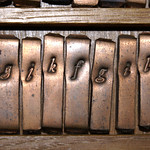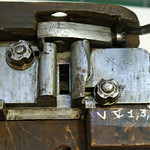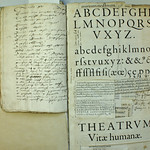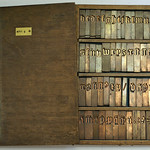Related notes
Recent posts
Images on Flickr
Category Archives: 3. Movable type
3.1.1 Notes on the origin of (e)m- and (e)n-square
Although often used in the typographer’s (digital) practice, the origin of the terms em-square and en-square seem to be quite unclear. I did some research and developed some models, of which I discuss and show a couple here. Because of … Continue reading
3.2.1 Notes on standardization
It is my experience that not all present-day type designers embrace the idea that the famous punchcutters from the past applied advanced regularizations and standardizations. The reactions seem to be in line with Fournier’s comment in his Manuel Typographique … Continue reading
3.2.2 Notes on the production of movable type
A recurring argument from historians against my theories on the standardization of character widths, i.e. fixed mould registers, is that the sixteenth century punchcutters were often not the justifiers of matrices, nor that they were the casters. In the … Continue reading
3.3.1 Notes on patterns and grids
The Romain du Roi is not the first unique example of the appliance of relatively extensive grids in the world of punch cutting. I emphasize ‘punch cutting’ here, because the Renaissance attempts to capture the construction and proportions of the … Continue reading




